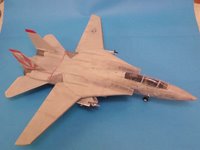The Sun, the Genome and the Internet

This is an interesting and inspiring book written by Freeman J. Dyson. The author believe that technologies in solar energy, board band wireless connection and genetic engineering will be the forces that engender social justice and bridge the gap between rich and poor.
The huge demand for oil has driven the oil price to a record high and posed a risk to the global economic growth. This factor alone provides sufficient incentives for scientists to develop alternative energy technologies such as wind power, geothermal heat, tidal wave and solar power, just to name a few. Among them, solar energy is the most promising candidate of choice. Most of us are familiar with the use of photovoltaic panel to collect sunlight and transform it into electricity. Apart from mentioning this popular use of solar energy, the author mentions the possibility of growing ‘energy plants’. The concept of ‘energy plants’ is not new. In Brazil, farmers grow sugar cane for anaerobic sugar fermentation, which produces alcohol to fuel the cars. The author predicts that in the future, with the help of genetic engineering, we can modify the genes of 'energy plants' to improve their efficiency of generating alcohol or other hydrocarbon products. With the advances in biotechnology, we may drain the products we need from the GM plants directly from the roots without reaping the aerial parts. Would it be a perfect solution to the energy crisis?
The author also mentions the use of photovoltaic panels and Wi-Fi technologies to make board band connection possible in remote areas. The networks mostly serve the rich and are inaccessible to the poor and uneducated, thereby increasing the barriers and inequalities between rich and poor. With the help of technology, villagers can gain access to the Internet and will no longer need to work in cities and this may alleviate the population pressure in most urban areas. The availability of information and communication technology to villagers can significantly improve their incomes and bridge the gap between rich and poor.
The above examples demonstrate how technologies drive ethics. The advances in biotechnology, energy technology and Internet technology are the driving forces to bring more social justice to those who are underprivileged. Technologies can bring us a socially just world if they are properly used by people who have political will and dedicate time and effort to care about the people who have long been forgotten.
21世紀三事 : 人文與科技必須展開的三章對話 = The sun, the genome, & the Internet / 佛里曼.戴森(Freeman Dyson)著 ; 席玉蘋譯.
Available at TKO public library and the call number is 407 3490




